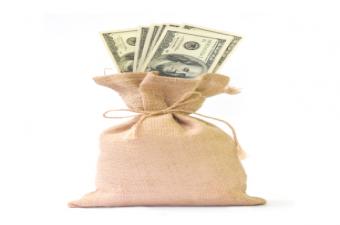Consumer spending grew just 0.3 percent in April, up slightly from 0.2 percent in March, the ""Labor Department"":http://www.dol.gov/ reported Friday.
[IMAGE]Economists had expected spending to be up 0.3 percent. At the same time, personal income grew 0.2 percent in April, BEA said, compared with market expectations of a 0.3 percent gain. Income grew 0.4 percent in March.
In dollars, income was up $31.7 billion in April compared to $52.2 billion in March. Spending increased $30.3 billion in April, up slightly from the $29.5 billion increase in March.
Disposable personal income ├â┬ó├óÔÇÜ┬¼├óÔé¼┼ô essentially after-tax income ├â┬ó├óÔÇÜ┬¼├óÔé¼┼ô rose $22.0 billion in April With spending exceeding disposable income, savings dropped $8.3 billion.
The report suggested a good start to the second quarter which began April 1. Consumer spending for the first quarter was up $63.5 billion according to Thursday's GDP report ├â┬ó├óÔÇÜ┬¼├óÔé¼┼ô also prepared by BEA ├â┬ó├óÔÇÜ┬¼├óÔé¼┼ô or about $21 billion per month.
Consumer spending in total accounts for about 70 percent of GDP and represented more than the entire GDP growth for the first quarter. (Other elements notably government spending, declined).
Personal savings as a percentage of disposable (after tax) income
[COLUMN_BREAK]slipped to 3.4 percent in April from 3.5 percent in March; it had been 3.4 percent in February. With continuing low interest rates, personal interest payments (non-mortgage interest) dropped 1.2 percent in April to $163.9 billion from $165.8 billion in March.
Wages and salaries rose $12.9 billion or 0.2 percent in March, BEA said, after increasing $18.4 billion or 0.3 percent in March and $25.8 billion in February. The March slowdown reflects the weaker labor market.
Wage and salary growth accounted for 40.7 percent of the growth income in March, down from 39.3 percent in February. ""Transfer payments"" ├â┬ó├óÔÇÜ┬¼├óÔé¼┼ô various government programs including Social Security, Medicare, Medicaid and unemployment insurance ├â┬ó├óÔÇÜ┬¼├óÔé¼┼ô represented about 1.1 percent of the total increase.
Unemployment insurance payments dropped for the fourth straight month. Part of the reason for the decline in April transfer payments was the calendar: April 1 was a Sunday which meant Social Security payments were made on the previous business day, March 30, and were counted as March income.
The increase in spending was weighted to services which accounted 92.4 percent of the total compared with 61.7 percent in March.
Spending on durable goods rose $7.7 billion, after falling $16.8 billion in March. Spending on non-durable goods dropped $3.9 billion in April after rising $24.0 billion in March, suggesting improving consumer confidence to make purchases which require borrowing.
The Personal Consumption Expenditure (PCE) Price Index ├â┬ó├óÔÇÜ┬¼├óÔé¼┼ô often considered the Federal Reserve's favored measure of inflation ├â┬ó├óÔÇÜ┬¼├óÔé¼┼ô was flat in April and is now 1.8 percent above its year ago level.
In March, the Index rose 0.2 percent and the year-year increase was 213 percent. Meanwhile, The Core PCE Index ├â┬ó├óÔÇÜ┬¼├óÔé¼┼ô excluding food and energy - rose 0.1 percent in April and is up 1.9 percent in the last year, compared with a 0.2 percent increase in March producing a 2.0 percent year-year increase.

 theMReport.com Your trusted source for mortgage banking news
theMReport.com Your trusted source for mortgage banking news









